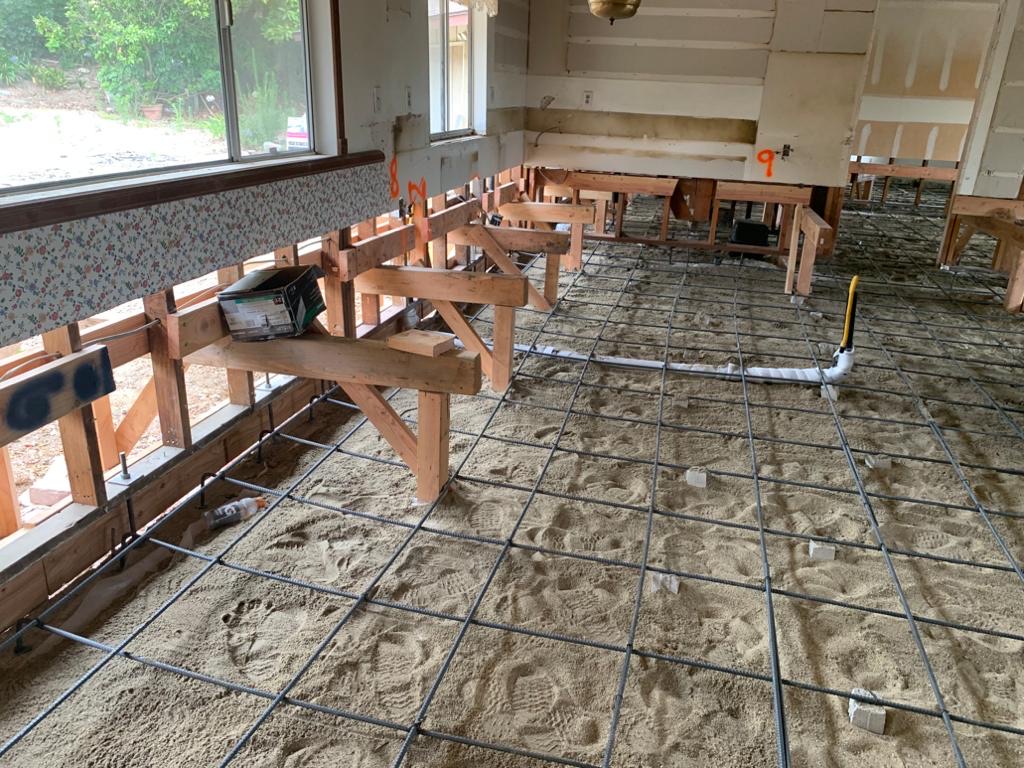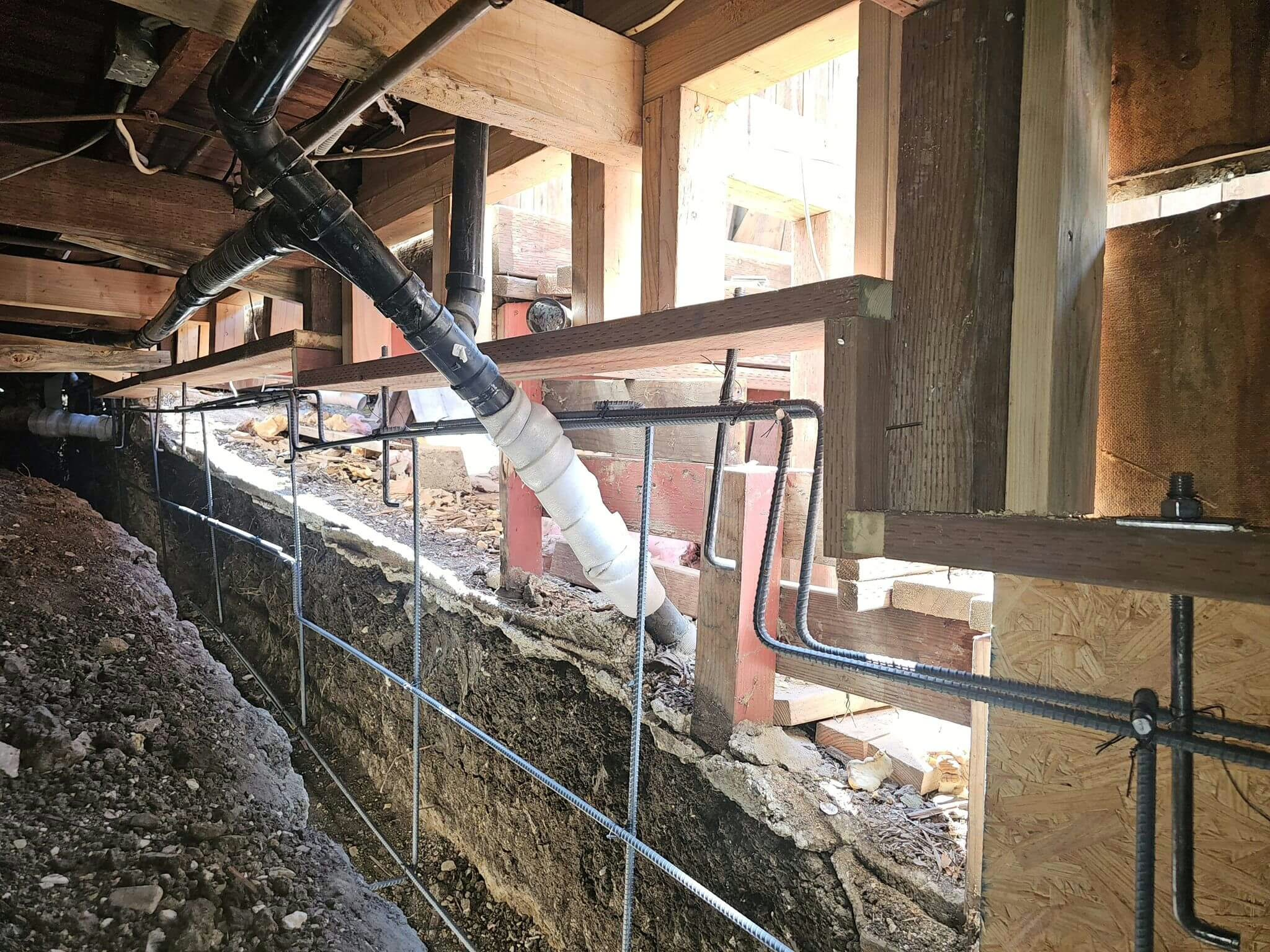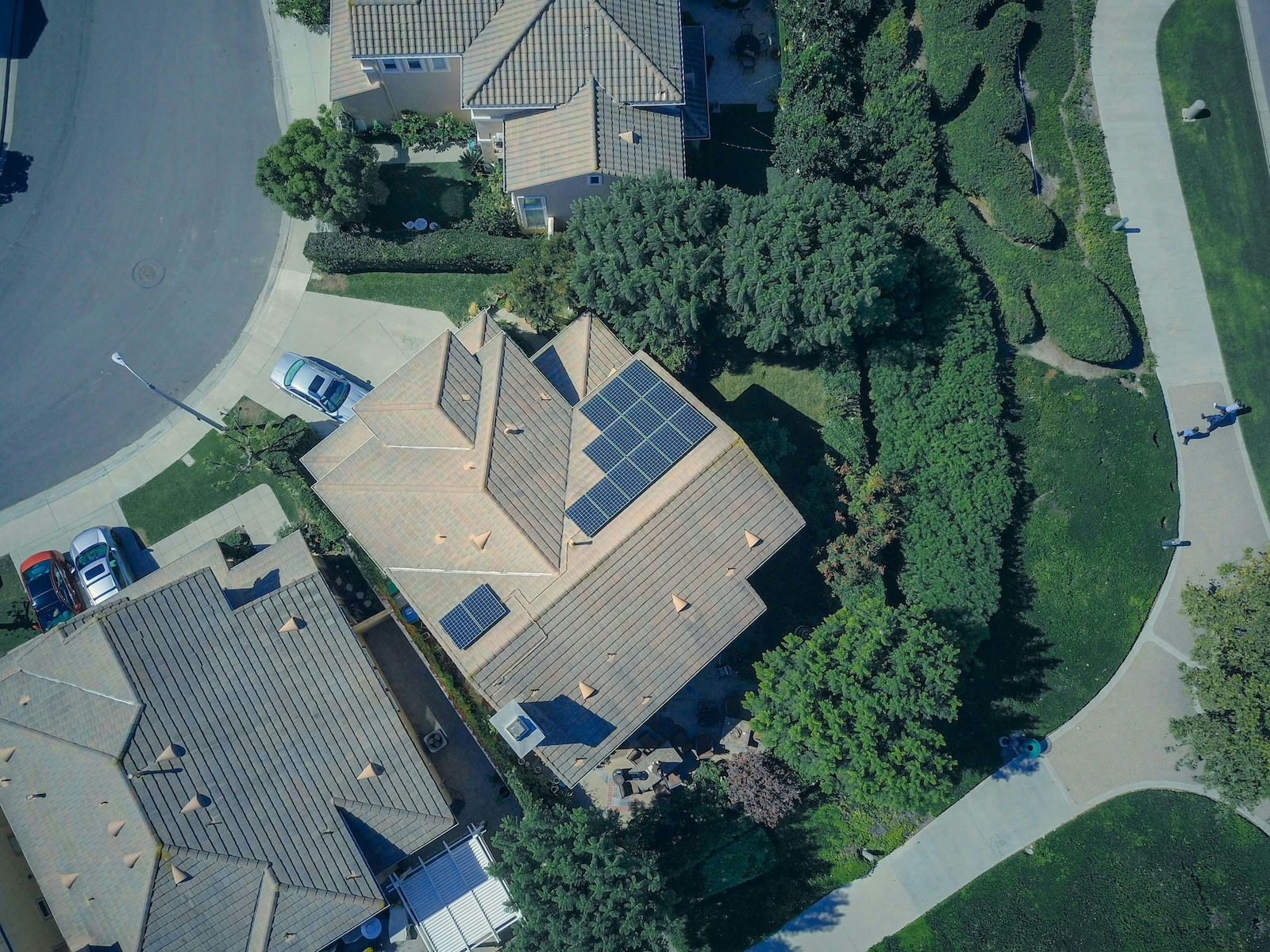The foundation of your home plays a crucial role in maintaining the stability and safety of your entire structure. When that foundation becomes compromised, especially in homes with slab foundations, slab replacement may be necessary. In this blog, we’ll explain what slab replacement involves, how it differs from concrete slab repair, and why addressing a damaged slab is vital to preserving your home’s structural integrity.
What is Slab Replacement?
Slab replacement is a process where a damaged or deteriorating concrete slab foundation is removed and replaced with a new one. Homes built on slab foundations have a single, continuous piece of concrete under the structure, providing support for the home’s walls, floors, and other components. Over time, various factors—such as soil movement, poor drainage, or age—can cause damage to this slab, leading to issues like cracks, uneven floors, or even foundation settlement. When this damage becomes too extensive for standard repairs, slab replacement may be the best option.
Signs You May Need Slab Replacement
There are several signs that indicate your home may need slab replacement rather than simple repairs. These signs include:
- Severe Cracks in the Concrete:
- Small cracks are common in concrete and can often be addressed with concrete slab repair methods. However, large cracks, especially those that are growing or spreading, can indicate more serious issues. If these cracks are affecting the structural integrity of your home, slab replacement might be necessary.
- Uneven or Sunken Floors:
- If parts of your floors are noticeably uneven or sunken, it’s a sign that your slab foundation may be compromised. This can occur due to shifting soil or water erosion beneath the slab, causing it to lose its support. In severe cases, slab replacement is needed to restore the home’s stability.
- Water Seepage:
- If you notice water pooling or leaking through your foundation, it could be due to a damaged slab. Persistent water issues can weaken the concrete, making it more prone to cracking and failure. Slab replacement may be required if water damage has severely deteriorated the foundation.
- Doors and Windows Sticking:
- If your doors and windows no longer open and close properly, or if you notice gaps around them, it could be a sign of foundation movement. As the slab foundation shifts or sinks, it can cause the frame of your house to become misaligned, indicating that the foundation needs attention.
Slab Replacement vs. Concrete Slab Repair
In some cases, a damaged slab can be addressed with concrete slab repair rather than a full replacement. Concrete slab repair involves patching cracks, injecting epoxy or polyurethane foam into voids, or reinforcing the existing slab with steel or carbon fiber. However, these methods are typically used for minor or moderate damage.
Slab replacement becomes necessary when the damage is too severe for repair techniques to be effective. This could happen due to:
- Extensive Cracking: When the slab has too many cracks or large breaks, repair methods may not restore the slab’s structural integrity, making replacement the safer option.
- Foundation Settlement: If your foundation has settled unevenly, slab replacement may be needed to level and stabilize your home.
- Water Damage: If the slab has been compromised by water seepage or flooding, repairs may only provide temporary relief, while replacement offers a long-term solution.
The Slab Replacement Process
The slab replacement process involves several key steps to ensure your home’s foundation is properly restored:
- Assessment:
- A structural engineer or foundation specialist will assess the extent of the damage to determine whether slab replacement is necessary or if concrete slab repair is sufficient.
- Slab Removal:
- If replacement is required, the existing damaged slab is carefully broken up and removed, while minimizing disruption to the rest of the home’s structure.
- Soil Preparation:
- Before laying a new slab, the soil beneath the foundation is inspected and prepared. This may include compacting the soil, improving drainage, or installing piers to ensure a stable base for the new slab.
- New Slab Installation:
- A new slab is poured and leveled, providing a fresh foundation for the home. Once the slab has cured, the home’s structure can be safely reattached to the new foundation.
- Finishing and Inspection:
- After the slab replacement, the area is cleaned up, and a final inspection ensures that the new foundation meets all building codes and safety requirements.
Why Slab Replacement is Important
Ignoring issues with your slab foundation can lead to more serious and costly problems in the future. A damaged slab weakens the overall structure of your home, potentially causing walls to crack, floors to shift, and doors and windows to misalign. By investing in slab replacement, you can prevent further damage and ensure your home remains stable and secure for years to come.
Additionally, replacing a damaged slab can help maintain or even increase your home’s value. Prospective buyers are more likely to invest in a property with a strong foundation, making slab replacement a wise decision if you’re planning to sell your home in the future.
Conclusion
The decision between slab replacement and concrete slab repair depends on the severity of the damage and the condition of your home’s slab foundation. If you notice any of the signs of a damaged slab, it’s essential to act quickly to prevent further deterioration. At Golden Retrofit & Foundation Repair, we specialize in assessing foundation issues and providing expert slab replacement services to ensure your home remains safe and structurally sound. Contact us today to schedule an inspection and protect your home’s foundation.
Check out Slab replacement projects: Gallery Slab Replacement




